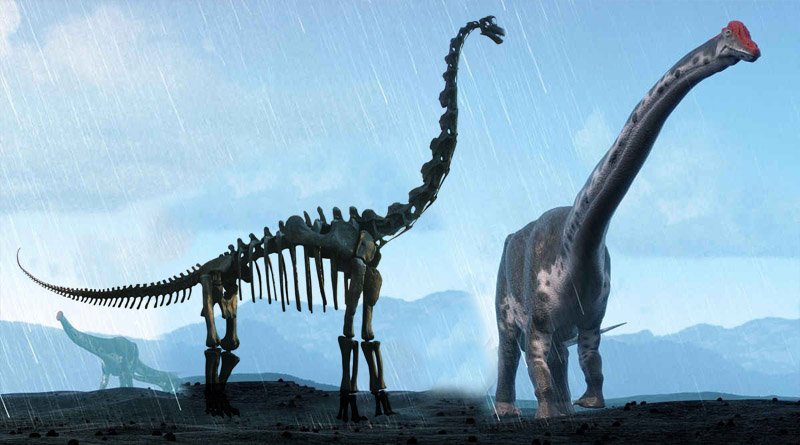The contender for the animal with the longest neck ever recorded has been identified as a herbivorous sauropod dinosaur that inhabited east Asia more than 160 million years ago.

The contender for the animal with the longest neck ever recorded has been identified as a herbivorous sauropod dinosaur that inhabited east Asia more than 160 million years ago.
Mamenchisaurus sinocanadorum, a dinosaur, had a neck that measured 15 metres, or 1.5 double-decker buses, according to a recent analysis of the creature’s neck and skull bones.
The creature’s fossilised remains were discovered in 1987 in rocks that were 162 million years old in the Xinjiang Uyghur Autonomous Region of northwest China, but the full length of the animal’s neck was not determined until recently.
One of the enormous herbivorous sauropod dinosaurs, the dinosaur measured 50 metres from snout to tail and weighed more than 70 tonnes. Even though there are only a few bones left of the beast, scientists were still able to calculate the length of its neck by comparing the fragments to complete fossils from dinosaurs that were closely related to it.
Andrew Moore, a palaeontologist at Stony Brook University in New York, said that although Mamenchisaurus sinocanadorum may have had the longest neck of any sauropod found to date, it is likely that there were larger, longer sauropods roaming around the Late Jurassic of what is now China.
“We should always assume that there were bigger animals out there, unless we’re willing to accept that we just so happened to find the biggest individual sauropod that ever lived. We can only hope that some of these titans were fossilised and are now lying in wait for palaeontologists to find them.”
One of the key physical characteristics that allowed sauropods to grow to such enormous sizes was a long neck. The animals could consume large quantities of food without expending much energy because they could graze vast areas of vegetation while standing still. The animals’ increased surface area from having a long neck may have also helped them stay cool; elephants accomplish this with their big ears.
The sauropod lifestyle developed early in the history of dinosaurs and persisted until the end of their reign during the mass extinction event brought on by an asteroid impact 66 million years ago. The ancestors of modern birds are the only dinosaurs that have survived.
Since the discovery of the first sauropod fossils, scientists have been baffled by how the animals managed to develop such long necks and massive bodies without toppling under their own weight. On the other hand, X-ray scans of the Mamenchisaurus fossils reveal that the vertebrae were light and hollow, with airspaces making up about two-thirds to three-quarters of their volume.
Similar skeletal characteristics are present in birds that reduce weight to enable flight. Such fragile skeletons would be common in sauropods, but the animal’s rod-like neck ribs, which were bony extensions of the vertebrae, stiffened the neck and increased stability.
One of the most amazing things about huge sauropods, according to Dr. Moore, is how easily their bones could be constructed. “Sauropods had lungs that could invade bones and replace dense marrow and bone tissue with airspace, just like their living cousins, birds. Such a light body would have been essential for reducing the weight of the enormous necks of the largest sauropods.”
